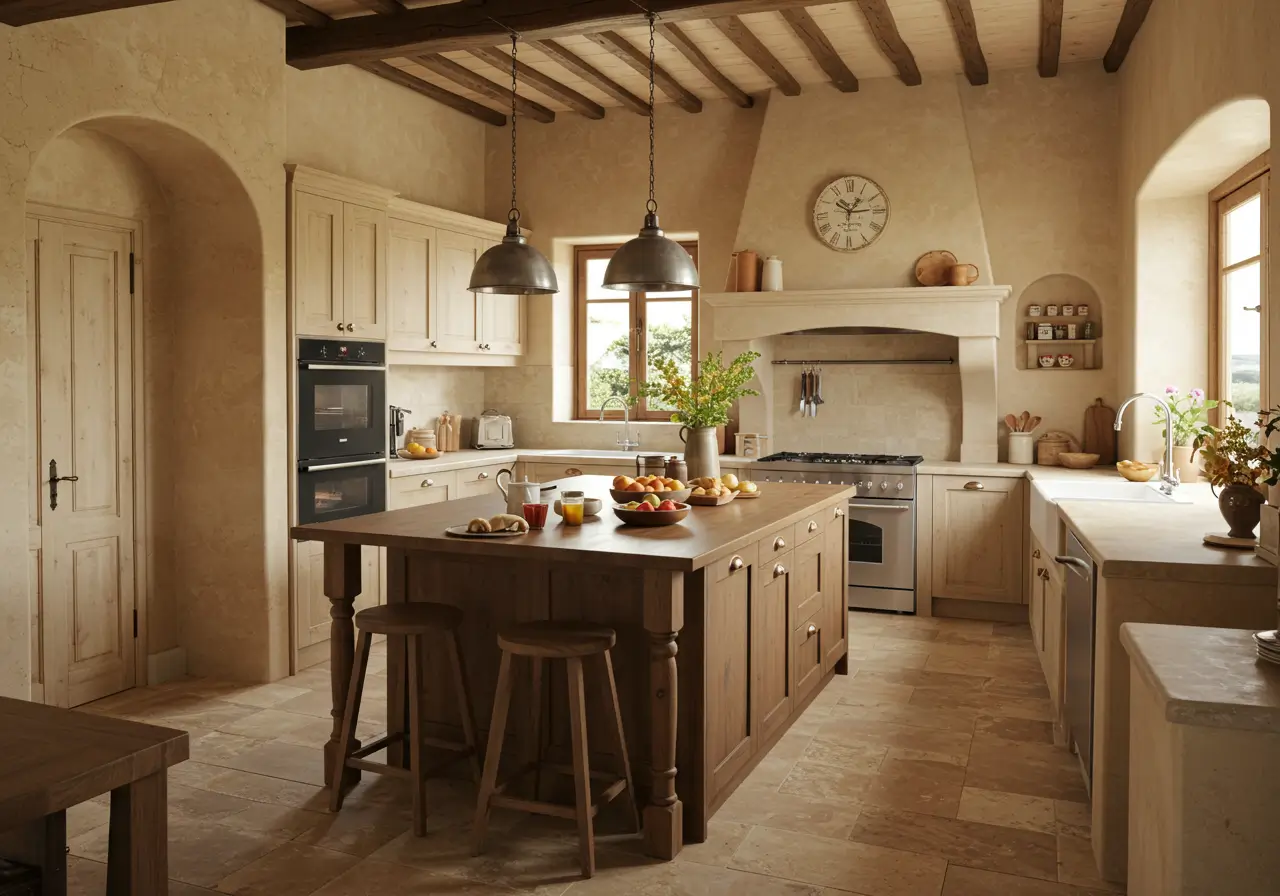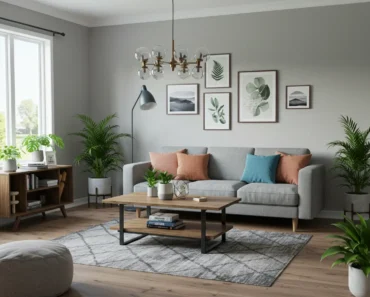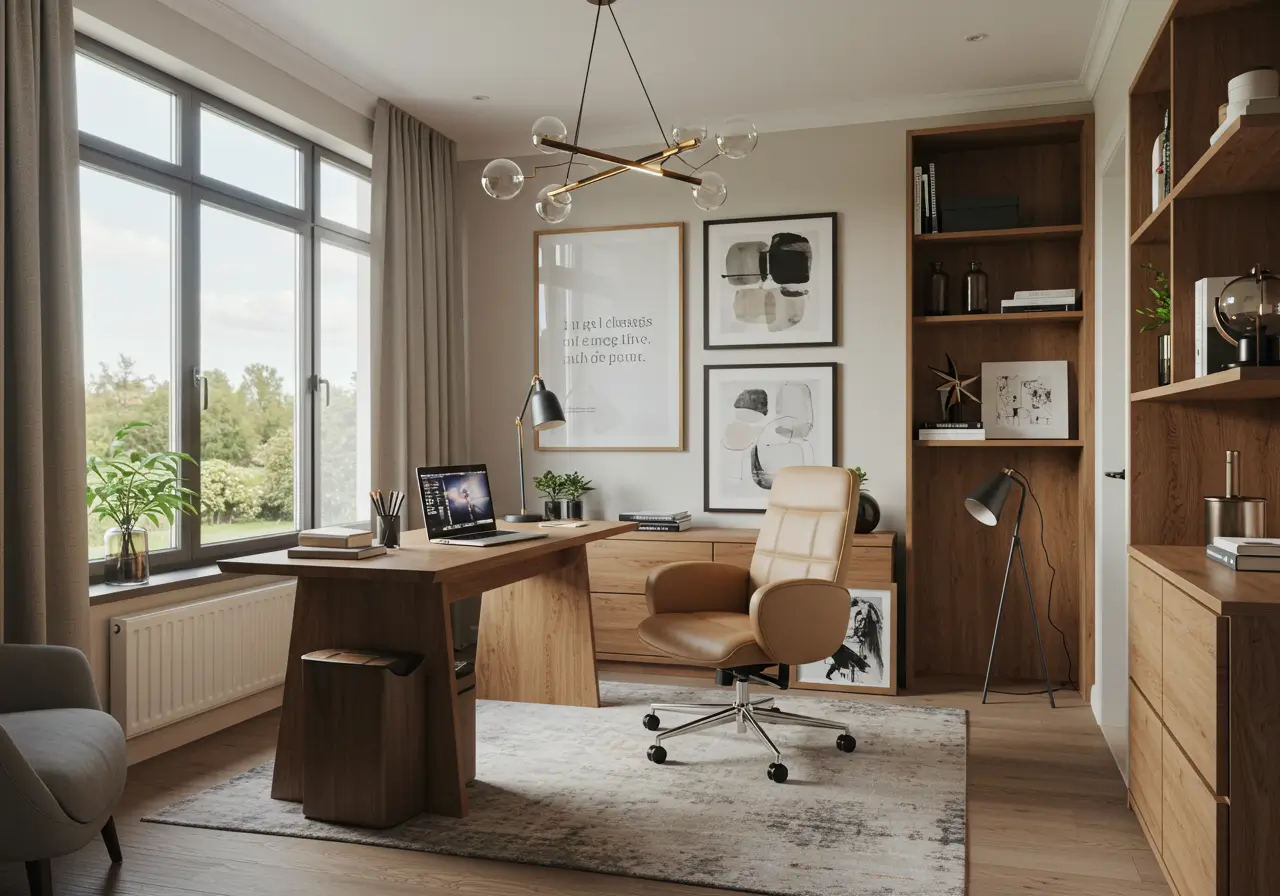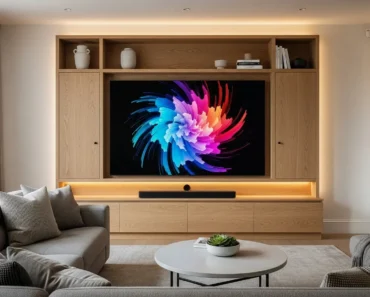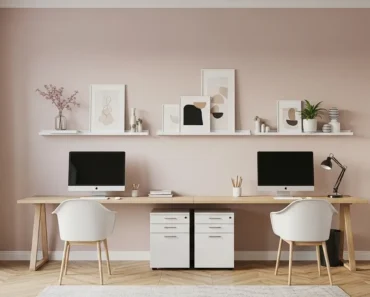Adding storage and display space to your home can be both practical and aesthetically pleasing. Floating shelves are a popular choice, offering a clean, minimalist look without visible supports. Crafting your own floating shelves wood allows for customization in size, finish, and style.
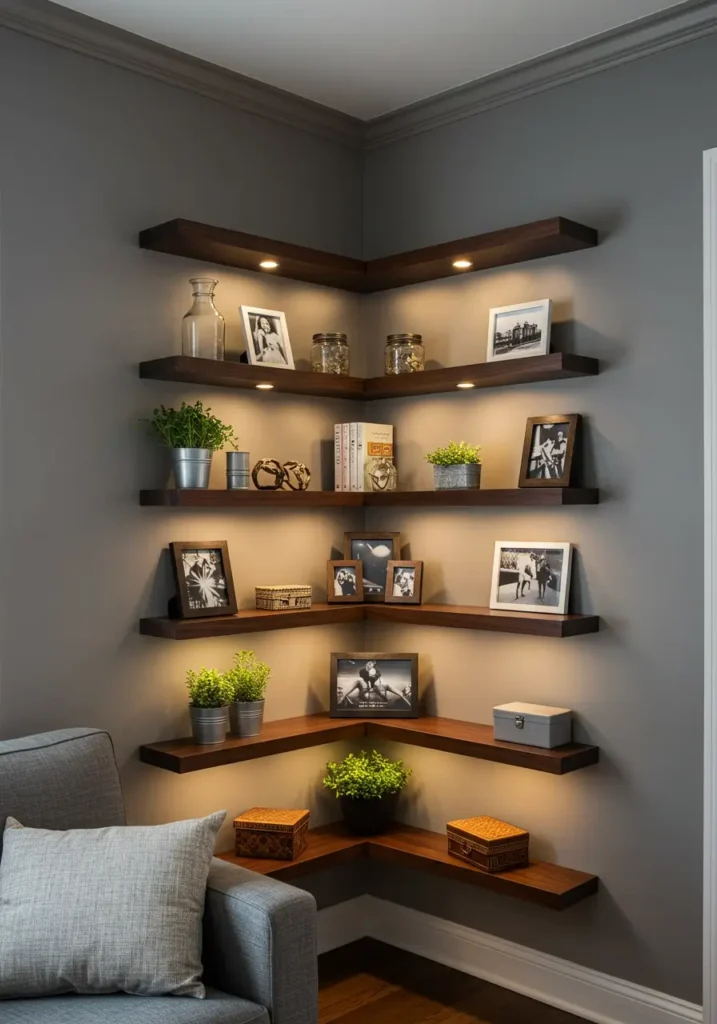
DIY floating shelves wood projects are achievable for many skill levels and can add a personal touch to any room in your United States home. They are perfect for showcasing decor, books, or essentials while utilizing vertical space.
This guide presents 15 genius DIY ideas for floating shelves wood, providing inspiration for various designs and techniques you can tackle yourself.
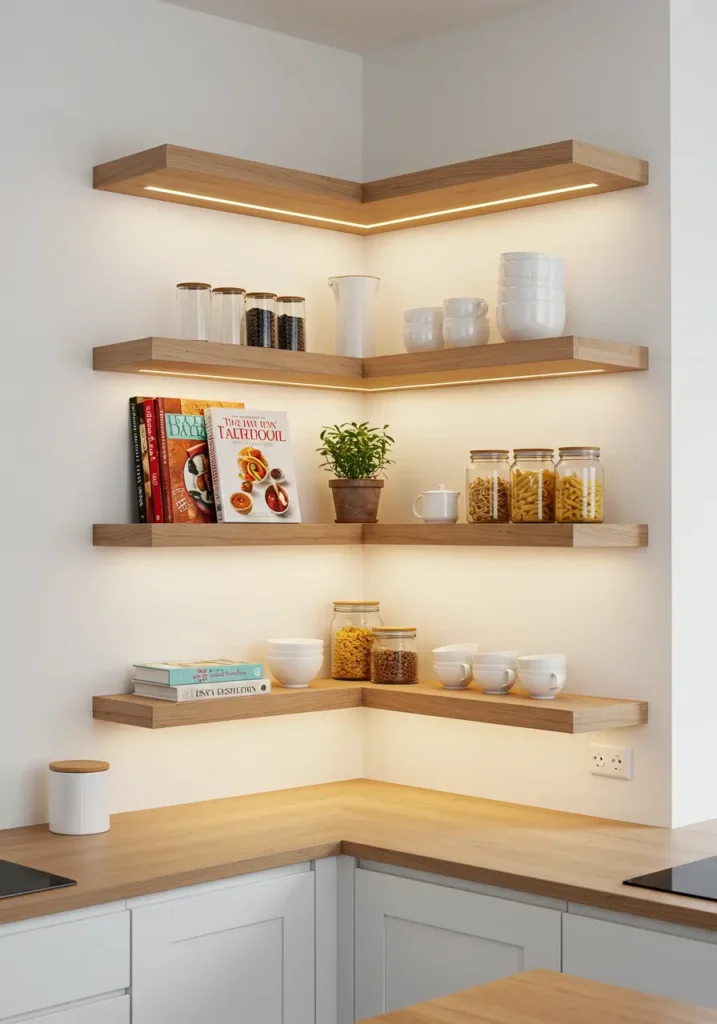
15 Genius DIY Ideas for Floating Shelves Wood
Creating your own floating shelves wood is a rewarding project. Here are 15 inspiring ideas, ranging from simple to more involved, to help you build beautiful and functional shelves:
1. Basic Hollow Core Shelf

This is a classic DIY method for floating shelves wood. You build a simple frame that mounts to the wall, then wrap it with thin plywood or project boards to create a hollow box.
The outer box slides over the mounted frame, giving the appearance of a solid, thick shelf floating on the wall. It is relatively lightweight and can handle moderate loads.
2. Butcher Block Floating Shelf

Use a piece of butcher block countertop material for a sturdy, substantial floating shelf wood. Butcher block is thick, durable, and adds warmth to a kitchen or pantry.
You will need heavy-duty floating shelf brackets designed for solid wood. Mount the brackets securely into wall studs before placing the butcher block on top.
3. Reclaimed Wood Plank Shelf

Find old barn wood, pallets, or salvaged lumber for a rustic floating shelf wood look. Clean and seal the wood while preserving its natural character, such as knots, grain, and imperfections.
Use hidden metal rods or heavy-duty L-brackets mounted inside the wall to support the weight of the often-heavy reclaimed wood.
4. Live Edge Wood Shelf
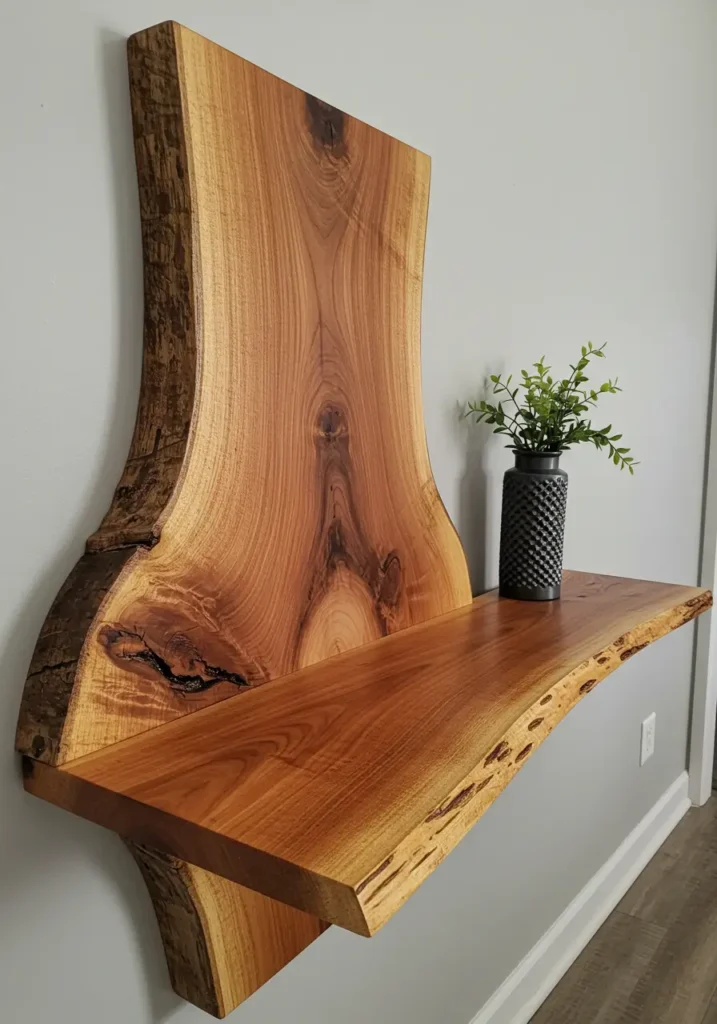
A slice of wood with the natural edge preserved offers a unique, organic floating shelf wood. These pieces are visually stunning and bring a touch of nature indoors.
Live edge slabs can be heavy, requiring robust mounting hardware drilled into wall studs or using specialized floating shelf hardware rated for high weight capacity.
5. Simple Pine Board Shelf

For an easy and affordable option, use standard pine boards. Sand and paint or stain them in your desired color. While not as thick as hollow core or butcher block, multiple boards can be stacked or placed side-by-side.
These can be mounted using readily available hidden floating shelf brackets or even decorative L-brackets if you do not mind them showing. This is a great beginner project for floating shelves wood.
6. Corner Floating Shelves

Utilize awkward corner space by installing triangular or rounded floating shelves wood. These maximize storage in underused areas like kitchens, bathrooms, or living rooms.
Corner floating shelf brackets or specialized internal mounting systems are available for these shapes. Measure the corner accurately before cutting the wood.
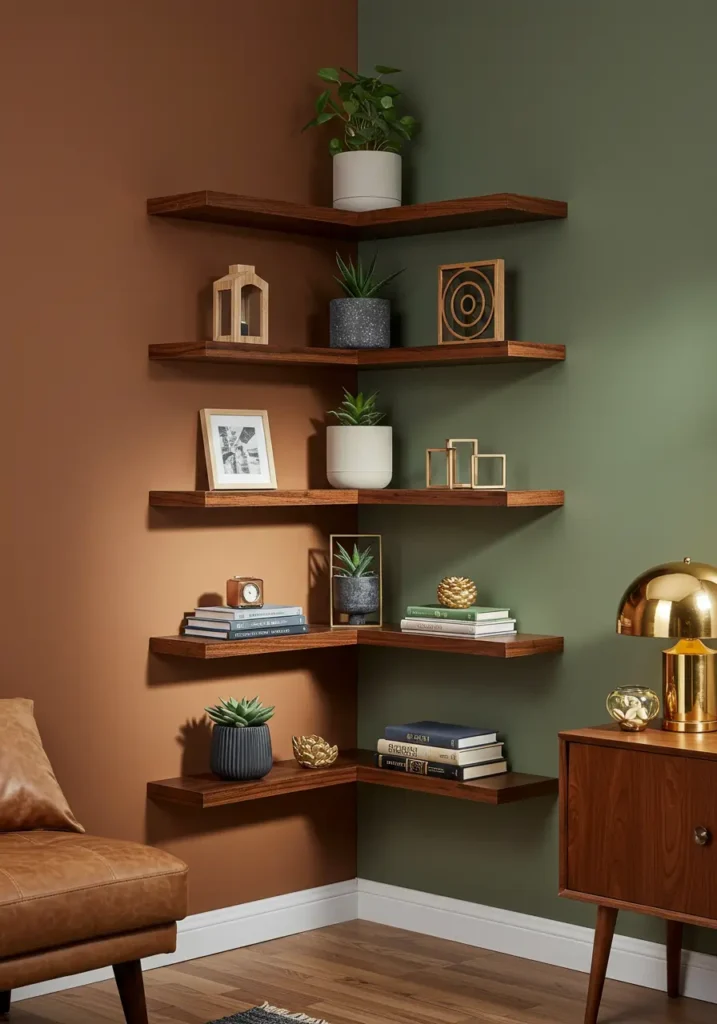
7. Picture Ledge Floating Shelf
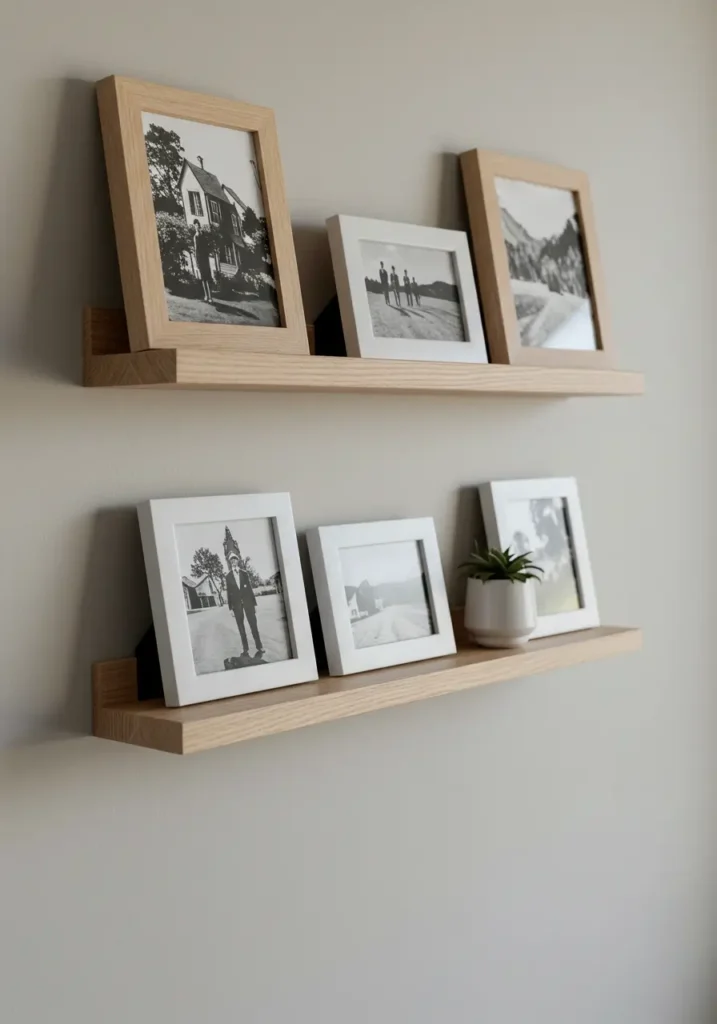
Design narrow floating shelves wood with a small lip on the front. These are perfect for displaying framed photos, small artwork, or lightweight decorative items without needing them to stand upright freely.
They can be made from simple lumber and mounted with slim, hidden brackets or screws drilled at an angle (pocket screws).
8. Integrated Lighting Shelf
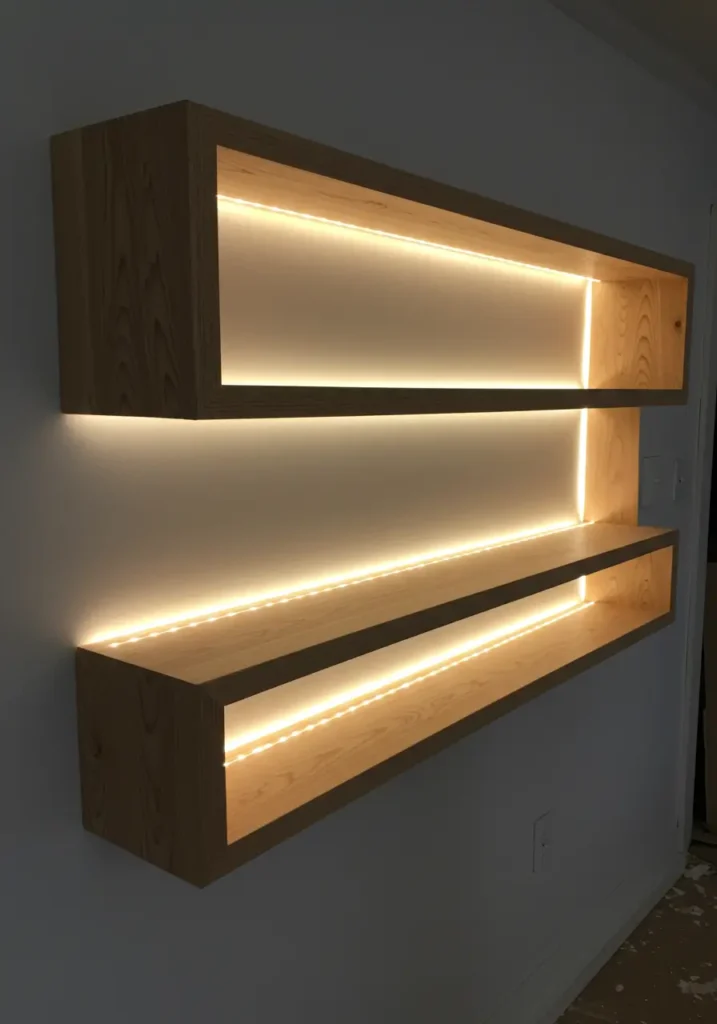
Build hollow core floating shelves wood with channels routed out to embed LED strip lighting on the underside or front edge. This adds functional task lighting or creates a warm ambient glow.
Ensure you plan for wiring, potentially hiding it within the wall or running it discreetly. This requires careful measurement and woodworking.
9. Floating Shelves with Hidden Drawers

A more advanced project, these floating shelves wood incorporate a slim, hidden drawer underneath for concealed storage of small items like keys, remote controls, or valuables.
This requires precise woodworking skills to build the drawer mechanism within the hollow shelf structure and integrate it seamlessly.
10. Industrial Pipe Floating Shelves
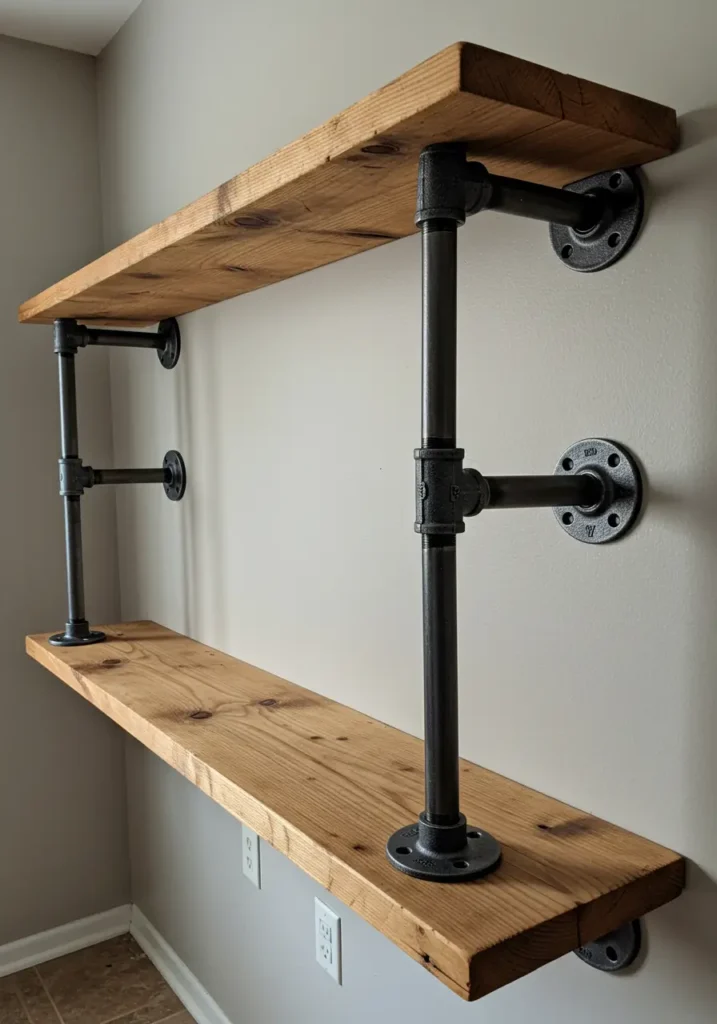
Combine wood planks with metal pipes and fittings for a sturdy, industrial-style floating shelf wood look. The pipes serve as visible supports that add to the aesthetic.
Secure the pipe flanges firmly to the wall studs, then attach the wood planks to the pipe structure. This is a popular aesthetic in many United States homes.
11. Hexagonal Floating Shelves
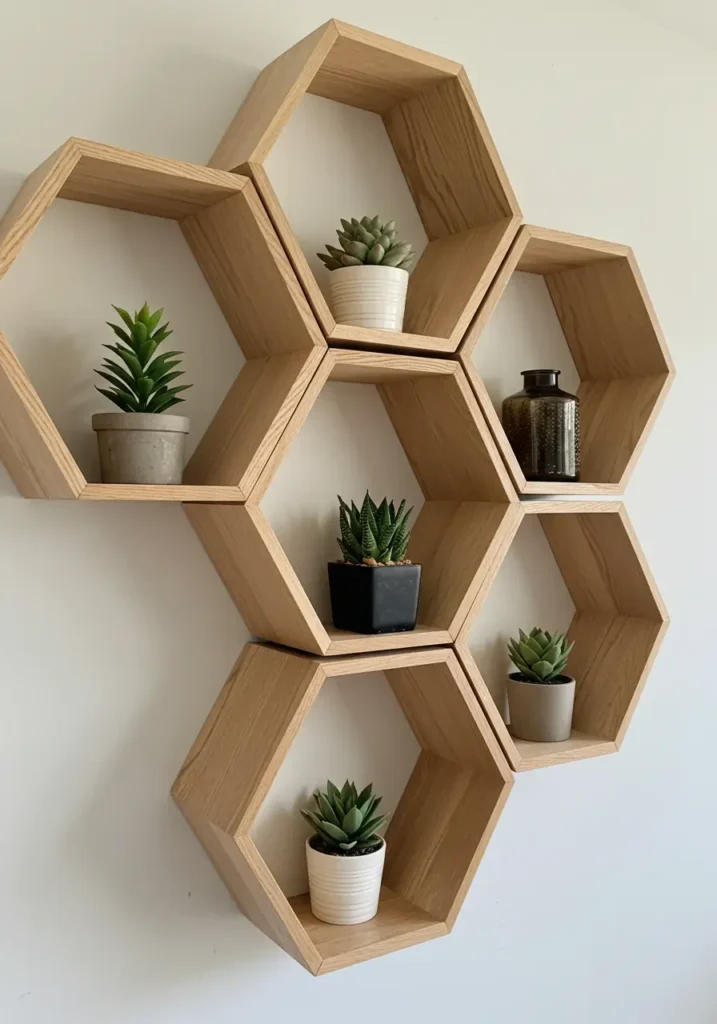
Build individual hexagonal box shelves from mitered wood pieces. These modular floating shelves wood can be arranged in unique patterns on the wall for a modern, geometric display.
Each hexagon can be mounted individually using small keyhole hangers or cleat systems, allowing for flexible arrangement.
12. Rope Hung Floating Shelves
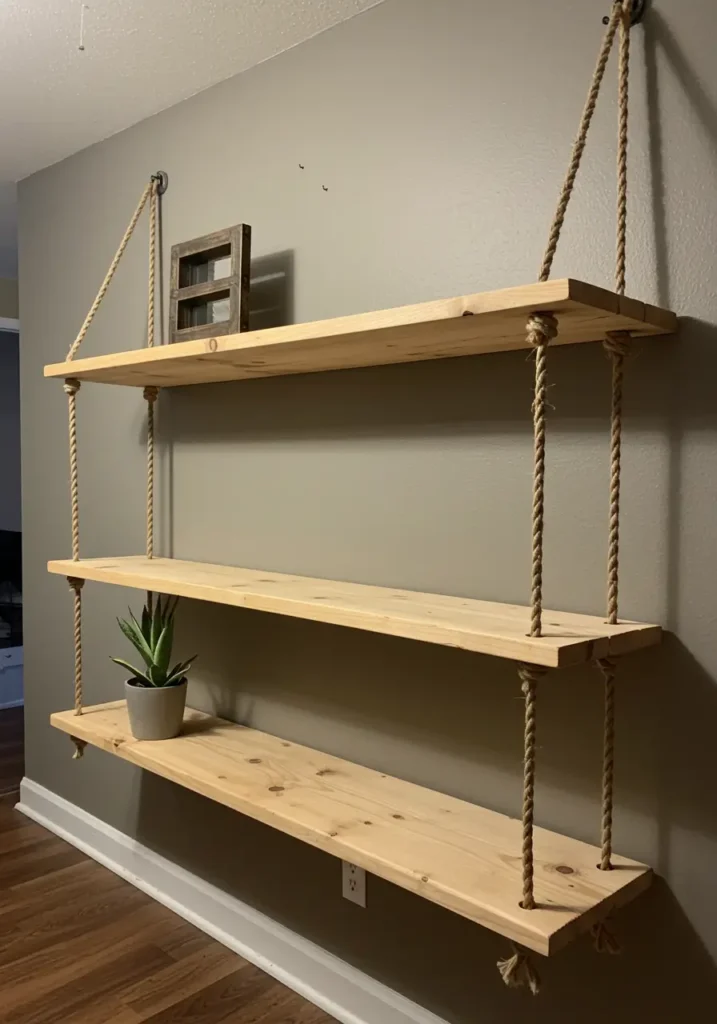
While not strictly floating, these shelves use ropes or cords threaded through holes in wood planks and anchored to the ceiling or a wall bracket. The shelf appears to float supported by the ropes.
Ensure the anchor points are secure and the knots are strong. Choose rope thickness appropriate for the weight of the wood and items.
13. Thin Profile Floating Shelves
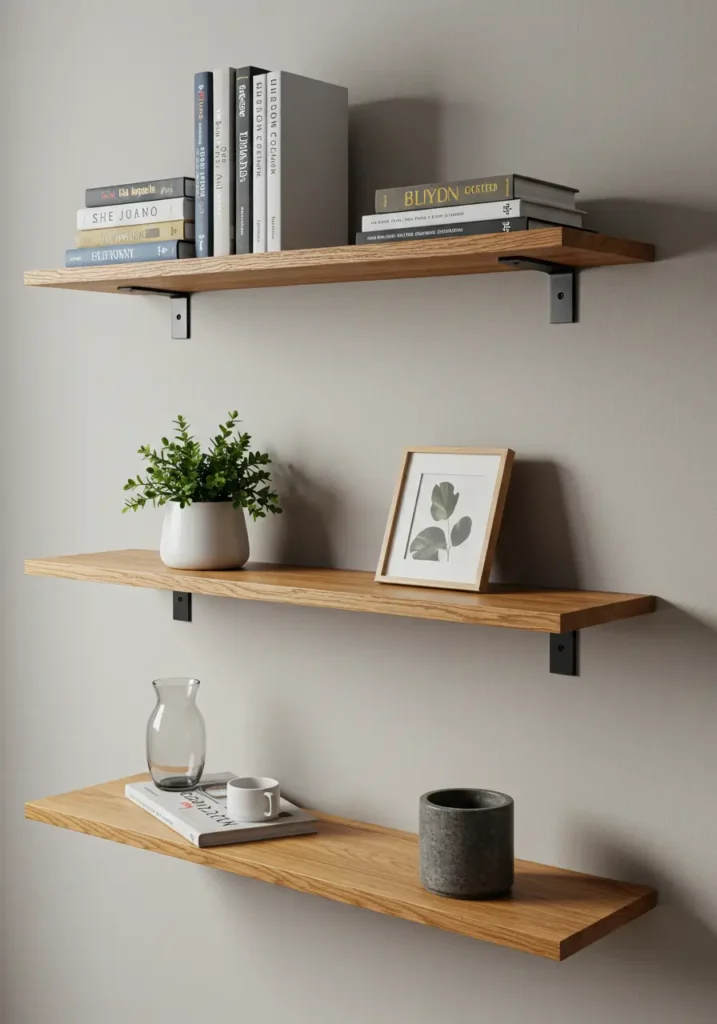
Instead of thick shelves, use thin pieces of finished plywood or solid wood boards for a minimalist, airy floating shelf wood appearance.
These require specific slim floating shelf brackets or a secure French cleat system mounted precisely.
14. Radiator Cover with Floating Shelf
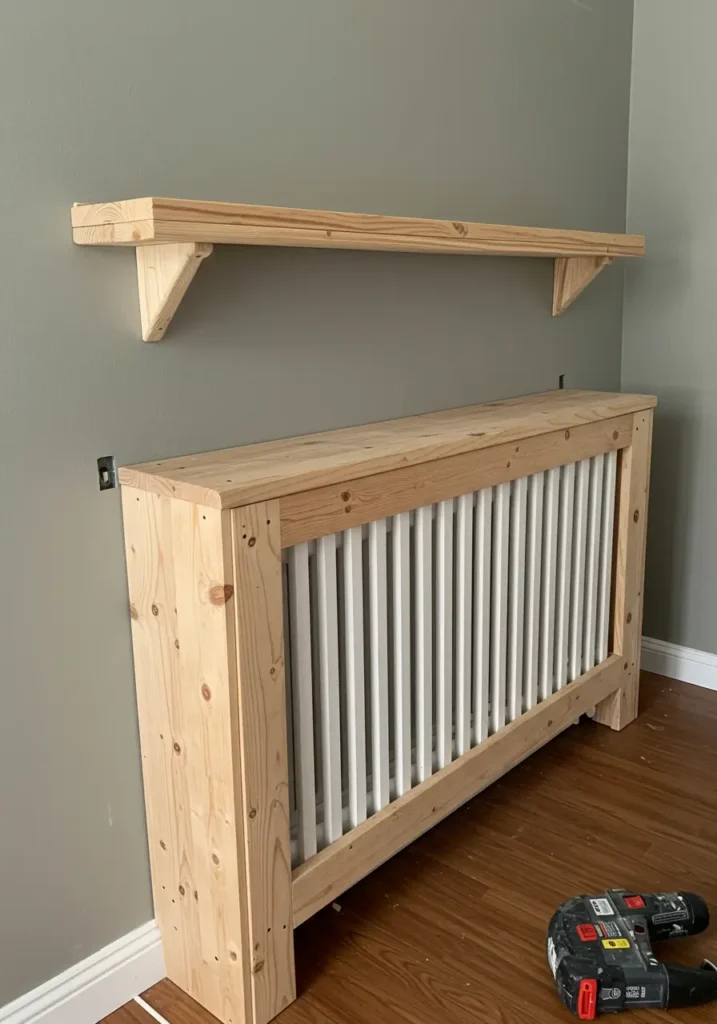
Build a custom wood cover for a radiator that includes a floating shelf above it. This maximizes space above the radiator and adds a functional surface while improving aesthetics.
Carefully measure around the radiator and ensure the design allows for proper heat circulation. Secure the shelf and cover structure to the wall.
15. Multi-Tiered Floating Shelves with Hidden Support
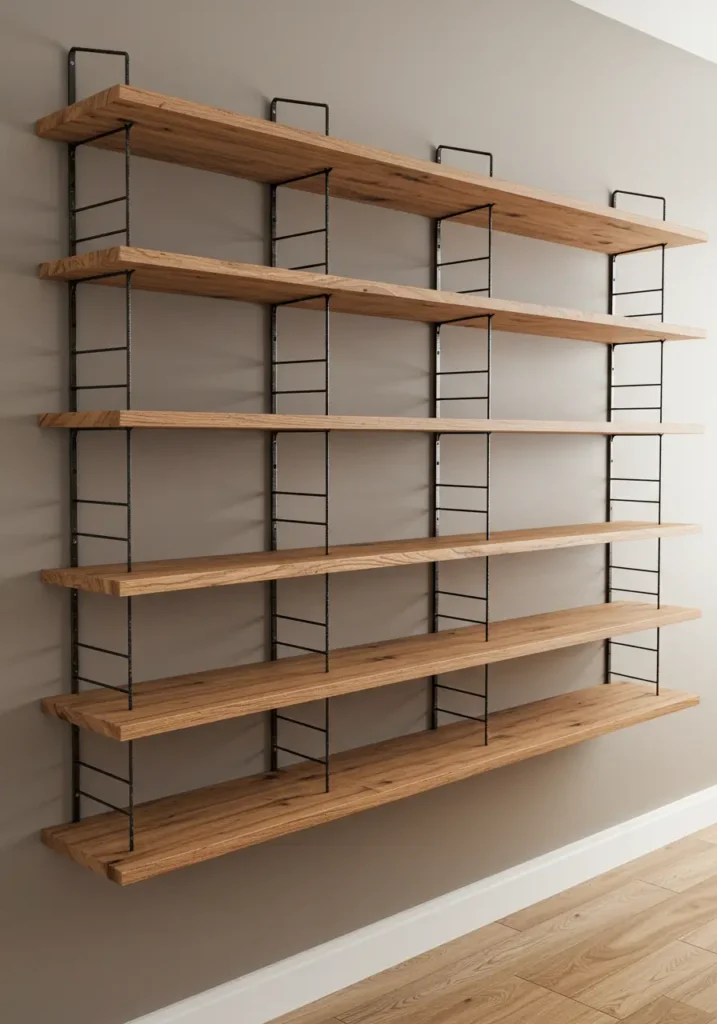
Design a unit of multiple floating shelves wood where support is hidden behind the shelves, connecting them vertically. This creates a clean, stacked look without visible vertical supports between shelves.
This typically involves a single mounting system anchored to the wall, with the shelves attaching to this core support structure at multiple levels.
Related Posts: 17 Ideas to Make Your House Look More Expensive
Benefits of DIY Floating Shelves Wood
Choosing to build your own floating shelves wood offers several advantages over purchasing pre-made options.
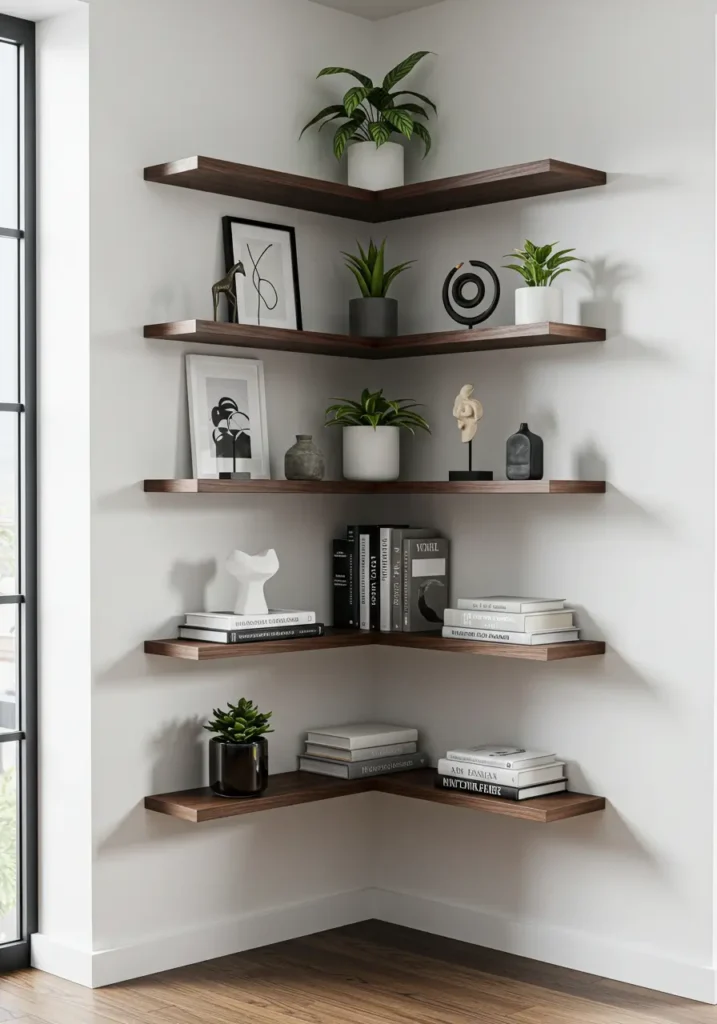
Customization
You have complete control over the exact size, shape, wood type, and finish of your floating shelves wood to perfectly match your space and decor.
Cost Savings
Building your own is often significantly less expensive than buying custom or even many retail floating shelves, especially for solid wood options.
Sense of Accomplishment
There is satisfaction in creating something functional and beautiful for your home with your own hands.
Tips for Installing Floating Shelves Wood

Proper installation is crucial for the safety and stability of your floating shelves wood.
Locate Wall Studs
Always aim to mount floating shelf brackets directly into wall studs using a stud finder for maximum support and weight capacity. Drywall anchors are generally not sufficient for anything more than very light loads.
Use the Right Hardware
Select floating shelf brackets or mounting systems appropriate for the weight of the wood and the items you plan to place on the shelves. Read manufacturer weight ratings carefully.
Ensure Level Installation
Use a level throughout the installation process to ensure your floating shelves wood are perfectly straight. Even a slight tilt will be noticeable and can cause items to slide.
Making Your Choice and Getting Started
Review these 15 ideas and decide which style of floating shelves wood best suits your needs, skill level, and the intended location in your United States home.
Consider the tools you have available and the type of wood you want to work with. Watch tutorials specific to the chosen mounting method if you are new to floating shelves wood installation.
Gather your materials and take precise measurements. Planning is key to a successful DIY floating shelves wood project.
Adding Style and Storage with DIY Shelves
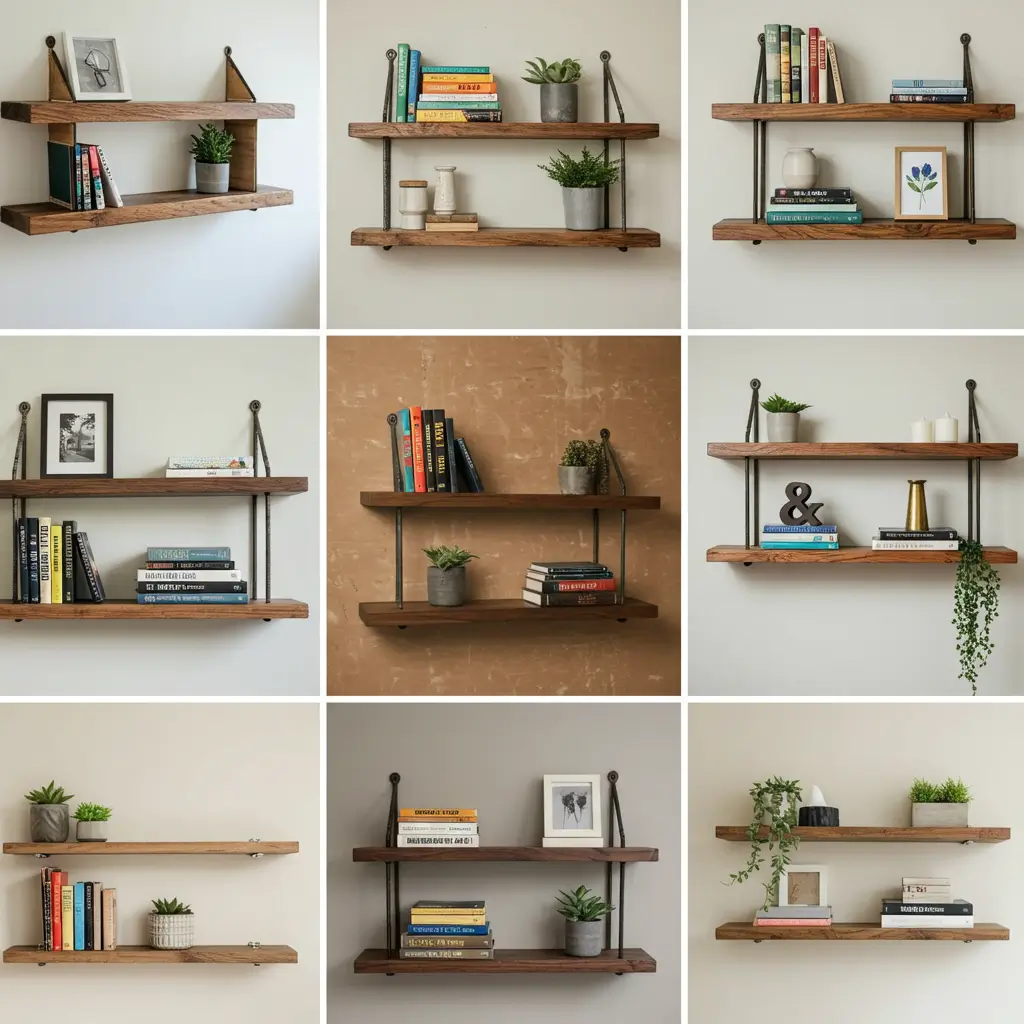
Building your own floating shelves wood is a fantastic way to add customized storage and display areas to your home. With 15 genius ideas presented here, you have plenty of inspiration to choose from.
Whether you prefer a rustic reclaimed look, modern minimalist design, or functional kitchen shelving, there is a floating shelves wood project waiting for you. Pay attention to planning, proper installation into studs, and selecting appropriate hardware.
Enjoy the process of creating something functional and beautiful. Your DIY floating shelves wood will be a unique addition to your space, showcasing your personal style and making your home more organized and visually appealing.
Related Posts: Room Makeovers: Transform Your U.S. Home with Style and Function
Frequently Asked Questions About DIY Floating Shelves
How much weight can DIY floating shelves wood hold?
The weight capacity depends heavily on the mounting method, the strength of the brackets, the type of wood used, and crucially, whether the shelf is mounted directly into wall studs. Properly installed floating shelves wood mounted into studs can often hold 20-50 pounds per linear foot or more, but always check hardware ratings.
What type of wood is best for floating shelves wood?
Common choices include pine (affordable, easy to work with), oak (durable, classic grain), maple (hard, smooth finish), walnut (dark, rich), and reclaimed wood (rustic character). The best depends on desired look, budget, and required strength.
Can I install floating shelves wood without drilling into studs?
It is strongly discouraged for anything other than very lightweight decorative items. Drywall anchors have limited capacity. For true floating shelves wood that hold books or dishes, mounting into studs is essential for safety and stability.
What tools do I need for a basic floating shelves wood project?
Basic tools might include a saw (circular or hand saw), drill, level, measuring tape, pencil, stud finder, sand paper, and finishing supplies (paint or stain). More complex projects may require a miter saw, router, or pocket hole jig.
How do I finish my floating shelves wood?
Options include staining (to enhance wood grain), painting (for color), or applying a clear sealant (like polyurethane or wax) for protection. The finish depends on the wood type and desired look. Always prepare the surface by sanding before applying finish.
